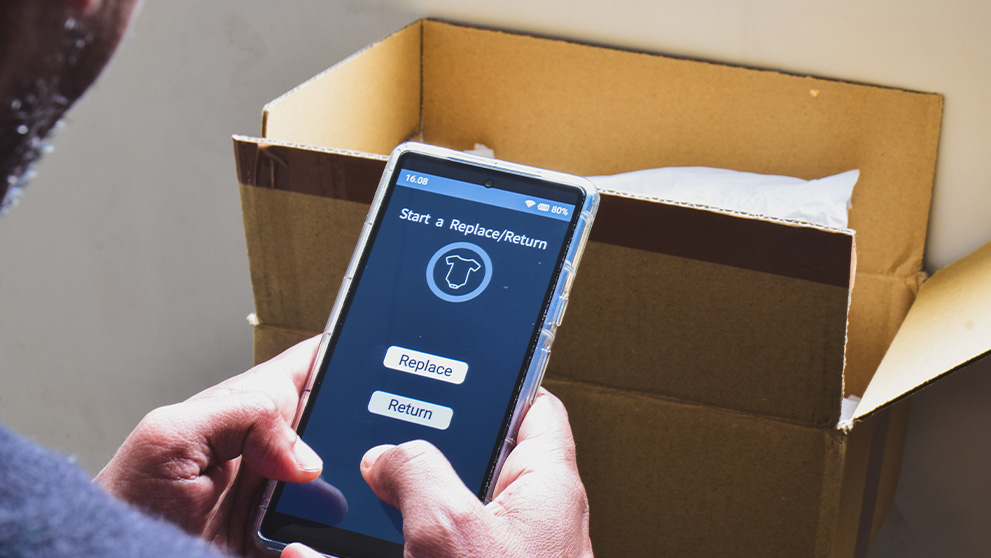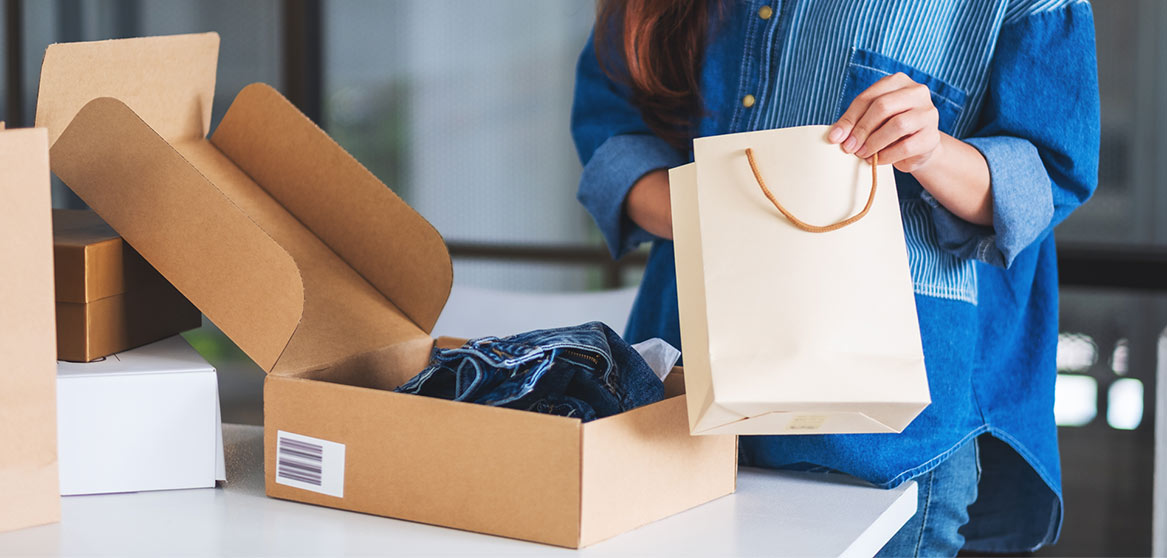There’s one unavoidable challenge e-commerce businesses can’t hide from: returns processing. It’s just as much of a challenge for B2B businesses as it is for consumer-facing companies, driven by consumers who want simple – and often free – returns as part of the deal.
For the seller, this can be a time-consuming and expensive process. But there is a solution! Reverse logistics offers a strategy that enables businesses to cut costs, minimize waste, enhance sustainability efforts, and foster customer loyalty.
What is reverse logistics?
Reverse logistics is the movement of goods “upstream” through a supply chain, to return them from the end customer back to a retailer or manufacturer.
One of the most common examples which all e-commerce businesses will be familiar with is returns – when an online consumer sends a product back to a retailer because it is damaged or simply because they have changed their mind.
Types of reverse logistics also include repairing, replacing, recycling and reselling. Along with returns, you can consider these the “Five Rs” of reverse logistics.
Three benefits of reverse logistics
There are several key benefits of implementing a reverse logistics strategy, namely:
- Improved customer satisfaction: 68% of B2B buyers scrutinize their suppliers’ return policies before making a purchase1. When businesses offer easy returns, repairs, or exchanges, it builds trust and loyalty with customers. A smooth and straightforward reverse logistics system can lead to positive customer experiences, as they feel confident in the business’ commitment to resolving issues. This, in turn, can increase customer retention and improve overall brand reputation.
- Sustainable returns: Reverse logistics helps businesses minimize their environmental footprint by promoting the recycling, reusing, and refurbishing of products – thus diverting them from landfill. This “circular economy” helps to conserve resources and reduce the need for new raw materials.
- Increased cost effectiveness: Although reverse logistics involves additional processes, it can be highly cost-effective in the long run. It allows businesses to recover value from returned products through resale, refurbishment, or recycling. Moreover, it can help reduce the costs of manufacturing new items by reusing components and materials. By efficiently managing returns, repairs, and recycling, businesses can lower disposal costs, reduce inventory waste, and optimize their supply chain, leading to greater overall cost savings.
Reverse logistics challenges in B2B
B2B returns tend to be more complicated than B2C returns; they often involve larger quantities and specialized/customized goods, which can make the returns process more complex and time-consuming. Furthermore, handling returns, repairs, or refurbishments in a B2B setting can be expensive, especially when dealing with bulk items, transportation, and labor costs.
Then there’s the coordination of several stakeholders – suppliers, manufacturers, and third-party service providers – to consider. Each may have their own guidelines for processing and managing returned inventory. It’s not hard to see how mistakes and delays arise!
So, what’s the solution? Below we have shared eight B2B reverse logistics strategies that your business can adopt for a streamlined and cost-effective system.
8 B2B reverse logistics strategies for success

1. Set up a centralized returns hub
This could be a warehouse or a dedicated facility that can manage the different aspects of reverse logistics.
When returned products come back, they should be inspected, tested, and classified into categories for resale, repair, recycling, or disposal.

2. Leverage technology and software for support
Integrated software solutions: Implementing an integrated system (e.g., ERP or specialized reverse logistics software) can provide a centralized database where businesses can track product returns from the moment they are initiated until the final disposition (e.g., resold, recycled, disposed). These systems can automatically generate tracking numbers and monitor the flow of returned goods, making the process more streamlined and transparent.
Furthermore, it can integrate with your inventory management software to automatically adjust stock levels based on returned goods. This ensures you have a real-time view of available inventory – and your customers are never met with an “out of stock” message.
RFID (Radio Frequency Identification) tags: Integrating RFID tags on products allows for real-time tracking of items as they are returned through the reverse logistics pipeline. RFID technology helps ensure that each item is accurately logged when it arrives at the returns facility, making it easier to track the item’s status at every stage of the process.
Barcode scanning: Barcodes on returned products can be scanned at various stages (e.g., when the product is received, inspected, repaired, or refurbished). This offers automated tracking and real-time updates on the item’s journey, reducing manual errors and speeding up processing times.
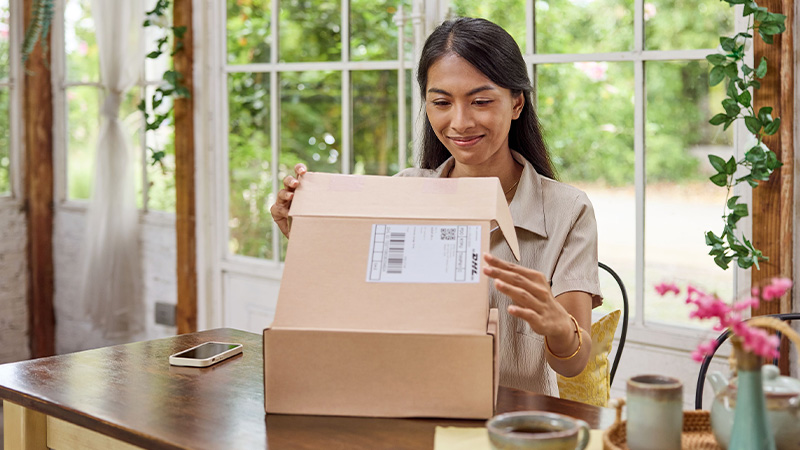
3. Use efficient packaging and labeling
Adopt standardized packaging that is easy to reseal and reuse, reducing the complexity and costs of reverse logistics.
Provide prepaid return labels or barcoded return instructions with your sent products to streamline returns processing and reduce friction for B2B customers.

4. Implement sustainable returns solutions
In industries where products have a defined life cycle (e.g., electronics or machinery), build a strategy for reclaiming used products for recycling or reselling.
Some products might not be suitable for resale or refurbishment. A responsible disposal strategy that complies with environmental regulations (e.g., electronics recycling) is essential.

5. Consolidate returns to reduce costs
For businesses with multiple clients or orders, consolidating returns into larger shipments can reduce transportation costs. This can be achieved by aligning return schedules or working with third-party logistics providers that specialize in reverse logistics.

6. Consider outsourcing your reverse logistics
If handling reverse logistics in-house becomes complex or cost-prohibitive, B2B businesses can partner with a 3PL provider who specializes in reverse logistics. These providers have the expertise, infrastructure, and technology to streamline returns processing.
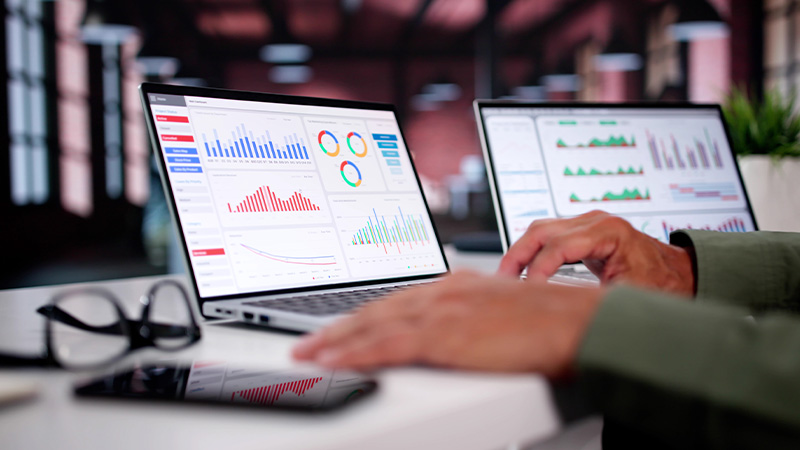
7. Tap into data analytics for continuous improvement
Use data to track key performance indicators (KPIs) like return rates, reasons for returns, and product condition upon return. This data will help you identify trends and areas where process improvements can be made.
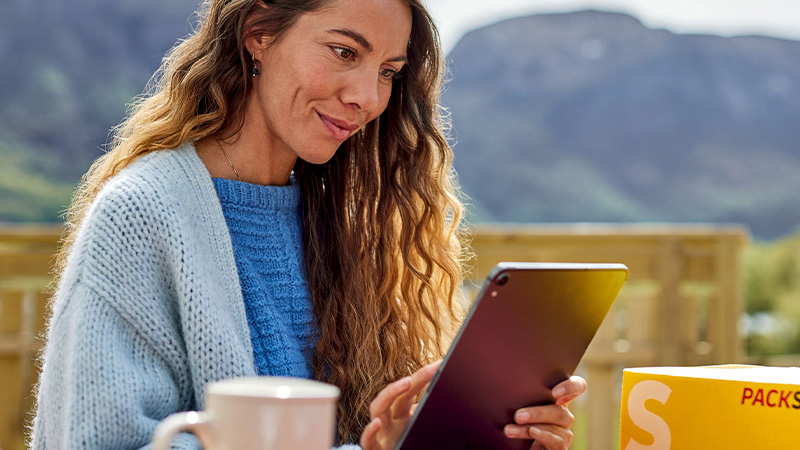
8. Keep customers in the loop
Ensure you communicate your business’ returns policy to customers to ensure they have a good experience.
Offer dedicated support channels for reverse logistics enquiries, too. This may involve specialized customer service teams or dedicated sections within the B2B portal where customers can initiate and track returns.
A reverse logistics strategy may require some upfront investment from your business. But over time, you can fine tune it to become a well-oiled machine that saves your business money, reduces its environmental impact, and – perhaps most importantly – gives your customers a better buying experience that will drive loyalty to your brand.
For fast, international B2B shipping, open a DHL Express Business Account.

